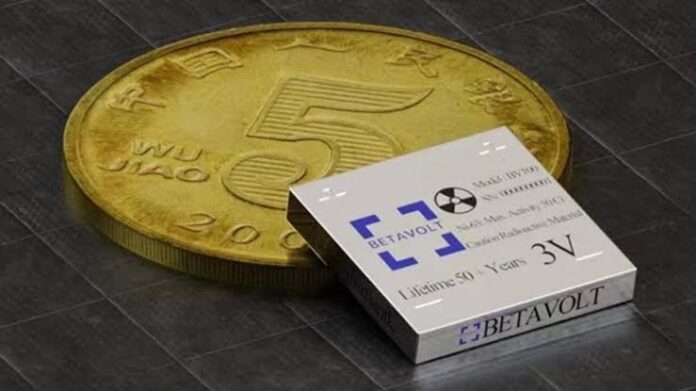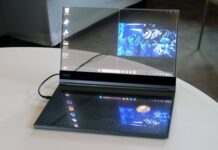A Chinese startup claims to have developed a new battery that could power smartphones for 50 years without the need for charging.
Beijing-based Betavolt said its nuclear battery is the first in the world to realise the miniaturisation of atomic energy, placing 63 nuclear isotopes into a module smaller than a coin, reads an Independent article.
The battery works by converting the energy released by decaying isotopes into electricity through a process that was first explored in the 20th century.
Terming it as the next-generation battery, the company has said the project already entered the pilot testing stage and will eventually be mass-produced for commercial applications like phones and drones.
“Betavolt atomic energy batteries can meet the needs of long-lasting power supply in multiple scenarios, such as aerospace, AI equipment, medical equipment, microprocessors, advanced sensors, small drones and micro-robots,” the startup said in a press release.
“This new energy innovation will help China gain a leading edge in the new round of the AI technological revolution.”
Betavolt said its first nuclear battery could deliver 100 microwatts of power and a voltage of 3V while measuring 15x15x5 cubic millimetres. It plans to produce a battery with 1 watt of power by 2025.
Their small size means they could be used in series to produce more power, with the company imagining mobile phones that never need to be charged and drones that can fly forever. Its layered design also means it will not catch fire or explode in response to a sudden force, Betavolt claims, while also being capable of working in temperatures ranging from -60 degrees Celsius to 120 degrees Celsius.
How it works
To create the radioactive battery, Betavolt’s scientists used nickel-63, which is a radioactive element, as the energy source and then diamond semiconductors as energy converters.
The team developed a single-crystal diamond semiconductor that is just 10 microns thick and then placed a 2-micron-thick nickel-63 sheet between two diamond semiconductor converters.
The decay energy of the radioactive source is then converted into an electrical current.
Betavolt claims the advantages of its atomic energy batteries are their lightweight, long service life, and high energy density, and they can normally work under extreme temperatures from -60 to 120 degrees Celcius.
Due to the modular design, multiple atomic batteries could be connected to provide a higher energy output that could power automotive technology and AI systems, just to name a few.
Radiation concerns
Nuclear energy, however, also comes with concerns regarding radiation.
However, Betavolt addressed this concern, stating the battery is safe as it has no external radiation and is suitable for use in medical devices inside the human body, like pacemakers and cochlea implants.
“Atomic energy batteries are environmentally friendly. After the decay period, the 63 isotopes turn into a stable isotope of copper, which is non-radioactive and does not pose any environmental threat or pollution,” the company said.
It could even be safer, too, as Betavolt states that the BV100 will not catch fire or explode in response to punctures or even gunshots, unlike some current batteries that can be unsafe if damaged or exposed to high temperatures.
What tiny-sized nuclear batteries mean
Scientists in the Soviet Union and the United States were able to develop the technology for use in spacecraft, underwater systems and remote scientific stations. However, the thermonuclear batteries were both costly and bulky.
The quest to miniaturise and commercialise nuclear batteries was taken up under China’s 14th Five-Year Plan, designed to strengthen the country’s economy between 2021 and 2025, while research institutions in the US and Europe are also working on their development, reads the Independent article.
This technology could revolutionise electronics by removing the need for chargers or portable power banks altogether, creating devices that run continuously and whose batteries do not degrade in terms of capacity and lifespan over charging cycles as Li-ion batteries do.
Such unlimited power could provide drones that fly continuously, phones that run constantly, and electric cars that don’t require recharging.










